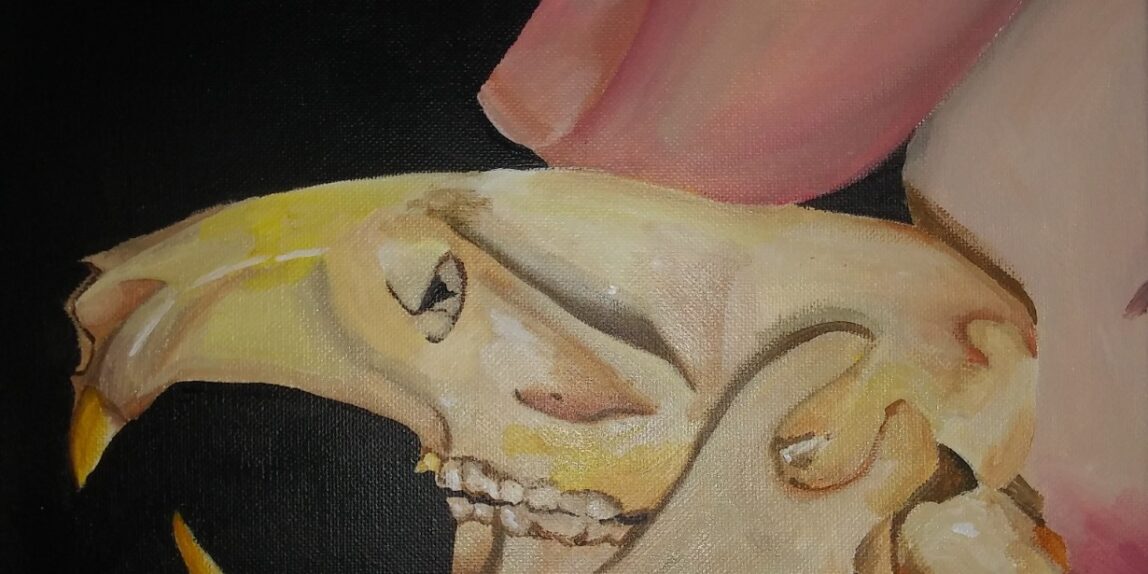In Memoriam
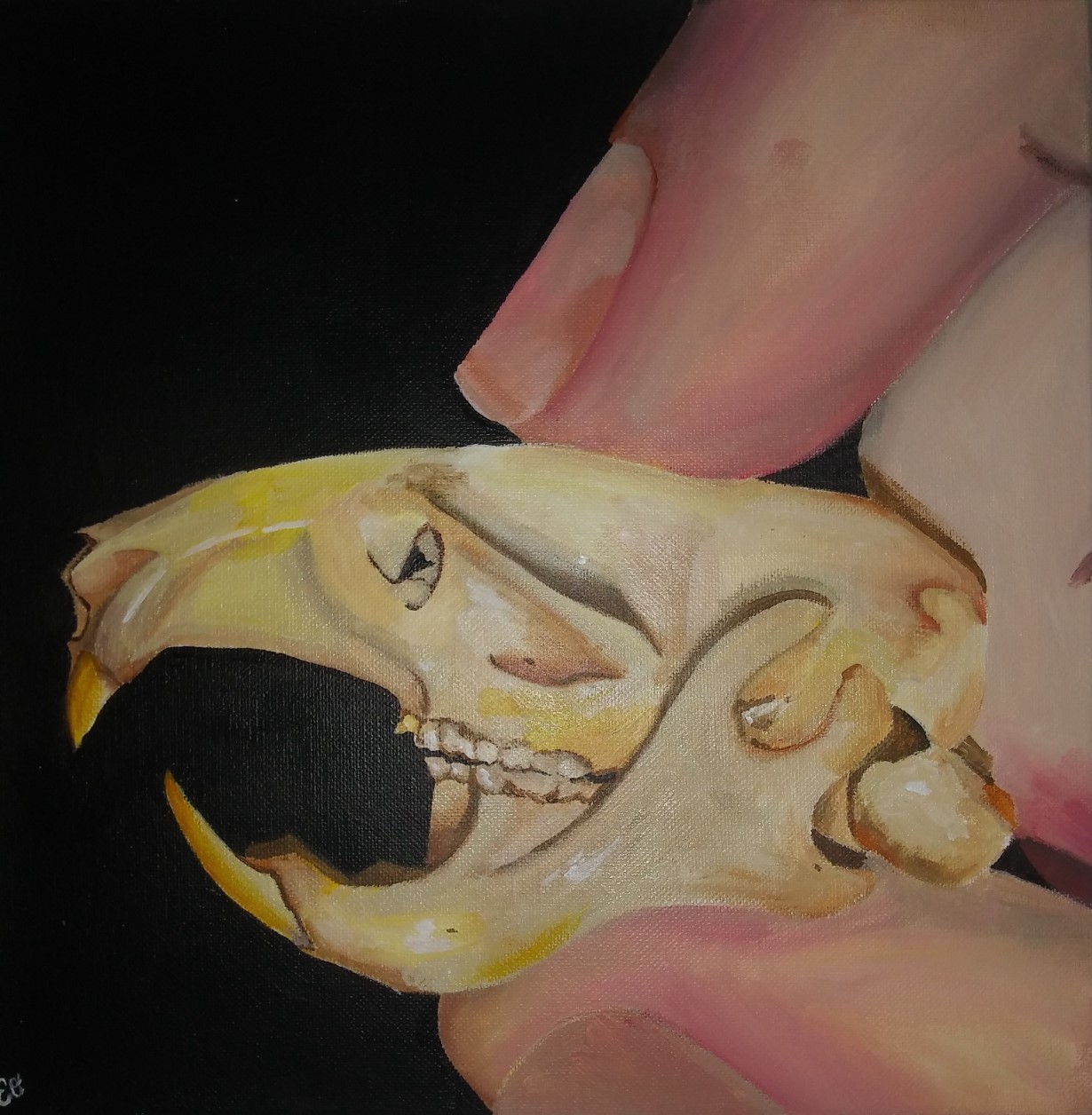
Roswell, Acrylic on Canvas 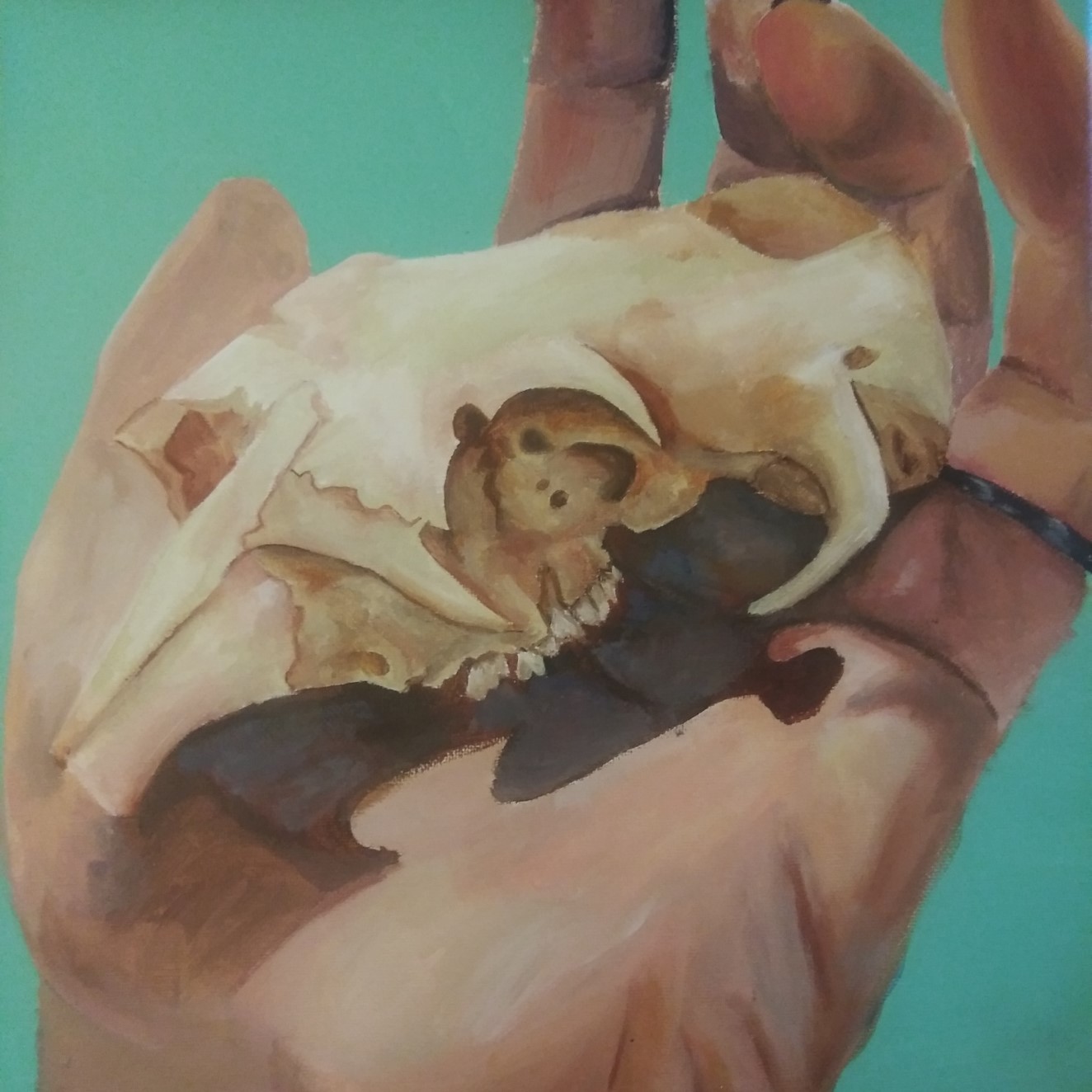
Cradle, Acrylic on Canvas 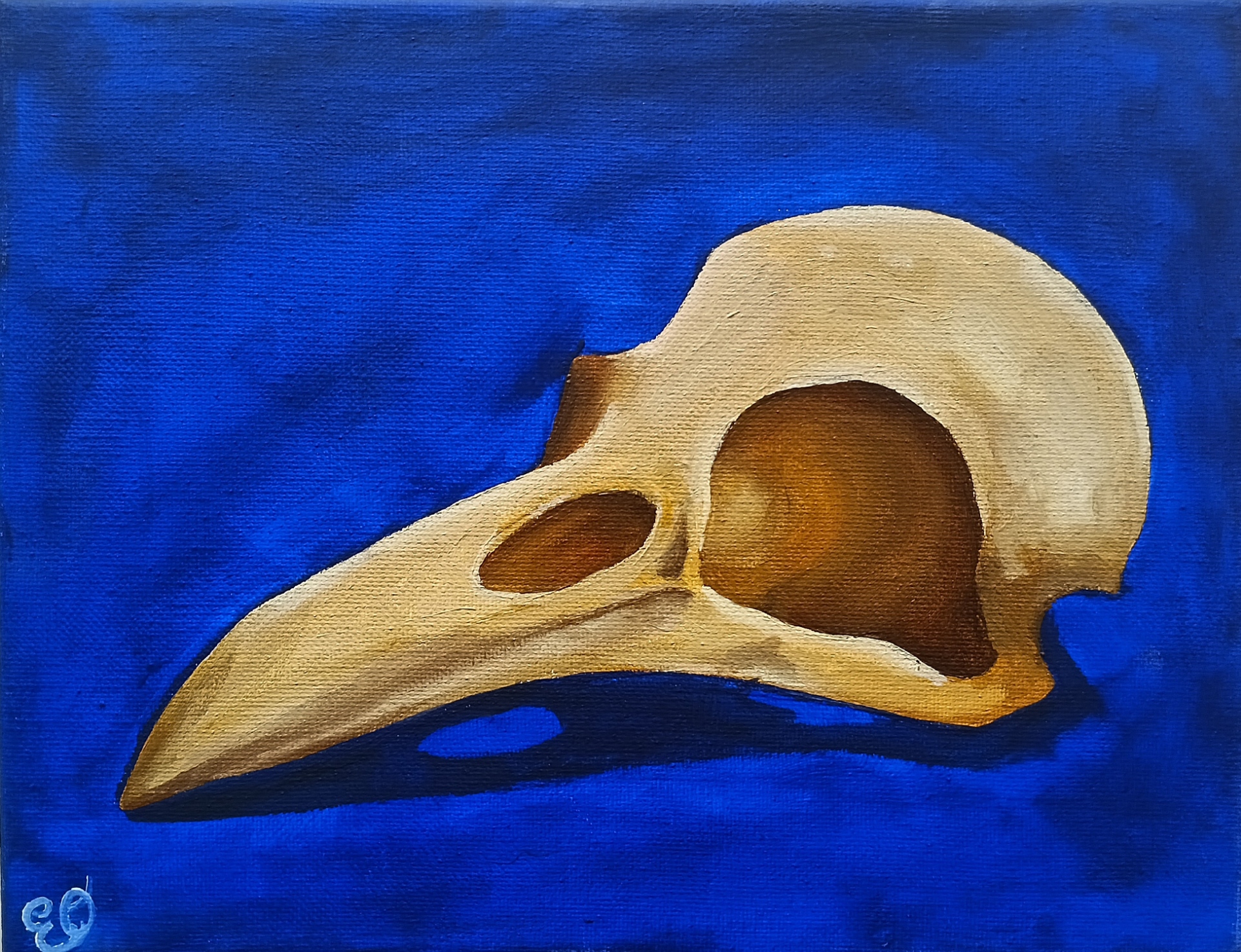
Still, Acrylic on Canvas 
Rogue, Acrylic on Canvas
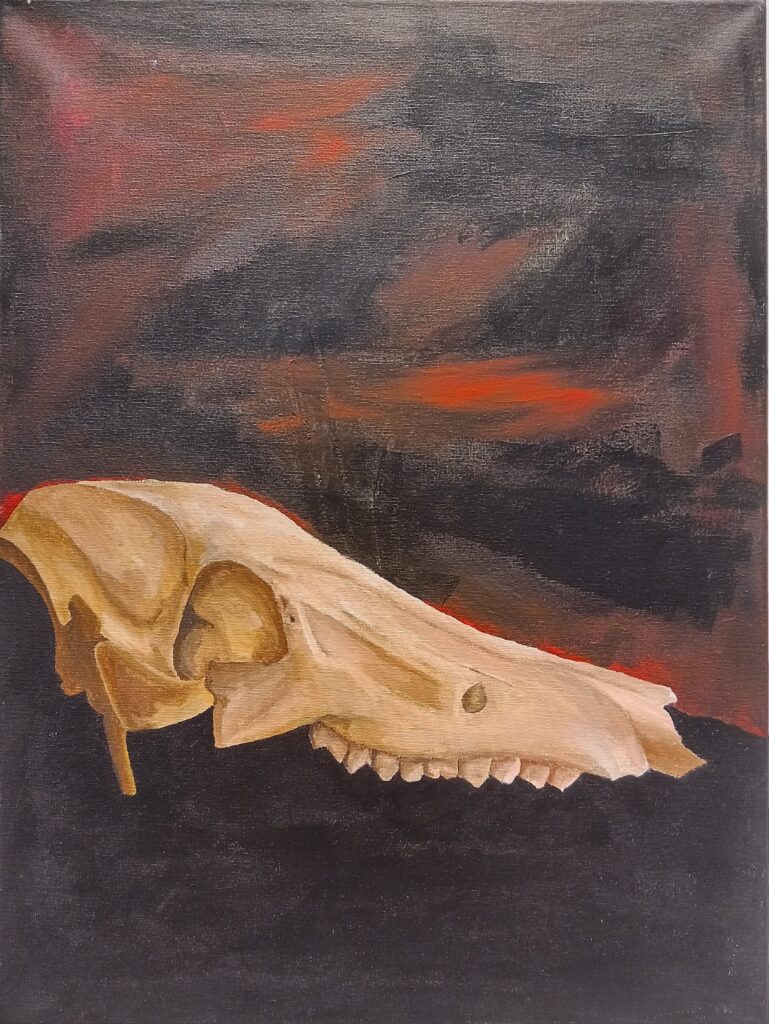
Still, Acrylic on Canvas 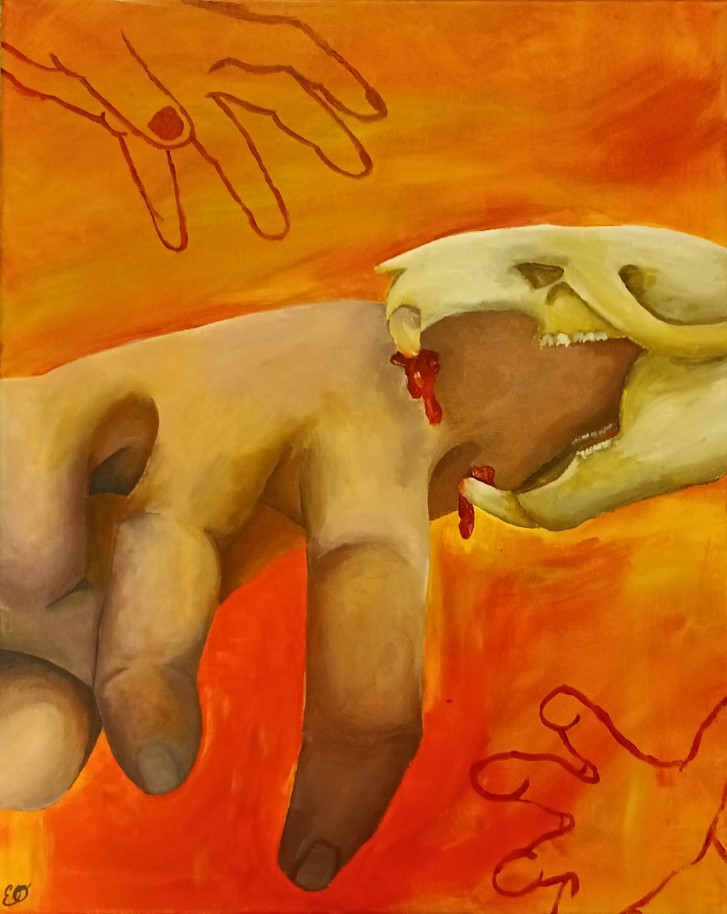
Rat, Acrylic on Canvas 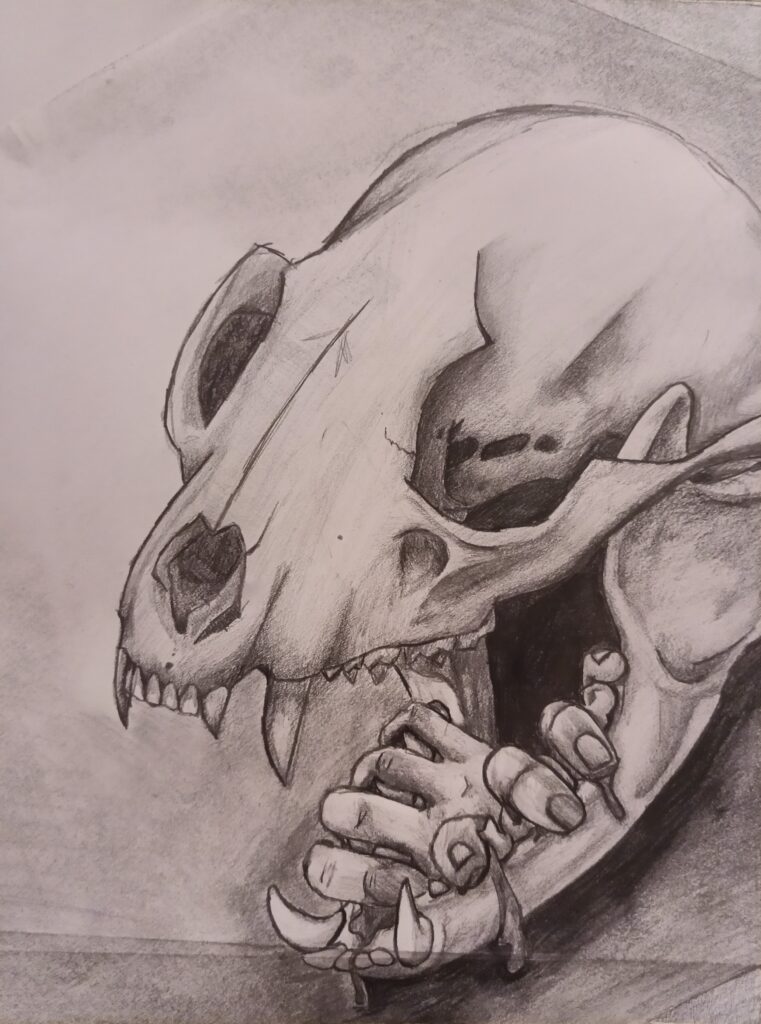
Raccon, Pencil on Paper
Over the course of this last year, I’ve had to learn how to deal with significant loss. I’ve had to cope with the loss of my grandfather, friends, and classmates, all while being isolated due to COVID. In all this time alone, I’ve had a lot of time to reflect on myself and my relationships. I started questioning my views of death and what might happen after. Death takes so many different forms, and we don’t realize it. Sometimes we can see it coming, sometimes it’s sudden, sometimes we don’t notice it at all. Griffin McElroy said “When someone leaves your life, those exits are not made equal. Some are beautiful and poetic and satisfying. Others are abrupt and unfair. But most are just unremarkable, unintentional, clumsy.” That quote has been rattling around in my mind since I first heard it, but it has been at the forefront of my thoughts during the process of grieving and dealing with that grief through my thesis. I’ve been using this series of paintings to work through my understanding of death and its forms, and what it might mean to die. I still don’t know the meaning, if I’m honest. I don’t think I will ever truly know. So instead of putting all my energy into what may be a futile attempt at answering a question that doesn’t want to be answered, I am working on my understanding of grief and its process.
When I began this series last fall, I explored all types of mediums and subjects. However, as I worked through these pieces, I focused my energy on painting skulls with acrylics. One odd thing about me is that I collect skulls and bones. Most are ones that I find while walking in the woods (COVID was good for one thing – more walks). In each of my pieces, I show how the bones are not objects that I own, they are not trinkets, but rather companions that I care for. I clean them of dirt- and sometimes, other remains- and I provide them a place to stay. I have a belief that if I am meant to find something, I will. If I find a pile of deer bones in the woods, that is the sign for me to take them home. That is the spirit of the deer calling to me, saying “I’m still here.” I take the bones with me, I clean them, I care for them. It’s my way of honoring their spirit, and their death. Every animal I find is precious to me, and that is what I try to show in my paintings. I like to show the side of death that is peaceful, like passing in your sleep or surrounded by those who love you. This is the energy I put into Roswell, Cradle, and Still. Like the artist Josephine Halvorson, I use delicate blending techniques to soften the subject that is normally shown as horrific and gory. Halvorson’s Carcass does this very well; it depicts a carcass of a dead animal, but it’s neither clinical nor shocking. It feels alive in a way that most depictions of the dead are not. Through my blending and color, I bring warmth and lightness to the subject of death. It is not scary to me. Painful sometimes, but not scary.
However, death is not always peaceful. Oftentimes it is painful and harsh. A rope cut with a blunt knife, or a slow burn as cancer consumes its host. The slow decomposition of someone still breathing. I also look at this side of death in my work. I explore this energy in Rogue, with its violent imagery. This piece is clear in its anger, the spirit is no longer allowing itself to be consumed, instead, it will be the consumer. This is also shown in Rat. This being is almost literally biting the hand that feeds it. As a viewer, we don’t know the intent of the hand. Is it to help or to harm? It doesn’t matter to the rat either way, it has been hurt too much to let anyone close again. However, in Wait, this shift of unease and malcontent is subtler. The energy in this piece is not static like the titles mentioned above, there is a buzzing in it, a quiet rage waiting to be released. This death was not consensual. While the calmer pieces are stable and relaxed, these are less tethered in reality. They are angry – it wasn’t their turn to go. The spirits art taking it out on those responsible, those still living.
I wish goodbyes were easier. I wish death was easier. Though I suppose I wouldn’t have much to show if it was. This series of works is a conversation from piece to piece, spirit to spirit, and artist to subject. I don’t cater to a viewer, just as spirits don’t cater to the living. This series isn’t meant to be easily understood. Viewers are mere eavesdroppers. I am not speaking to you, I am speaking to the dead.
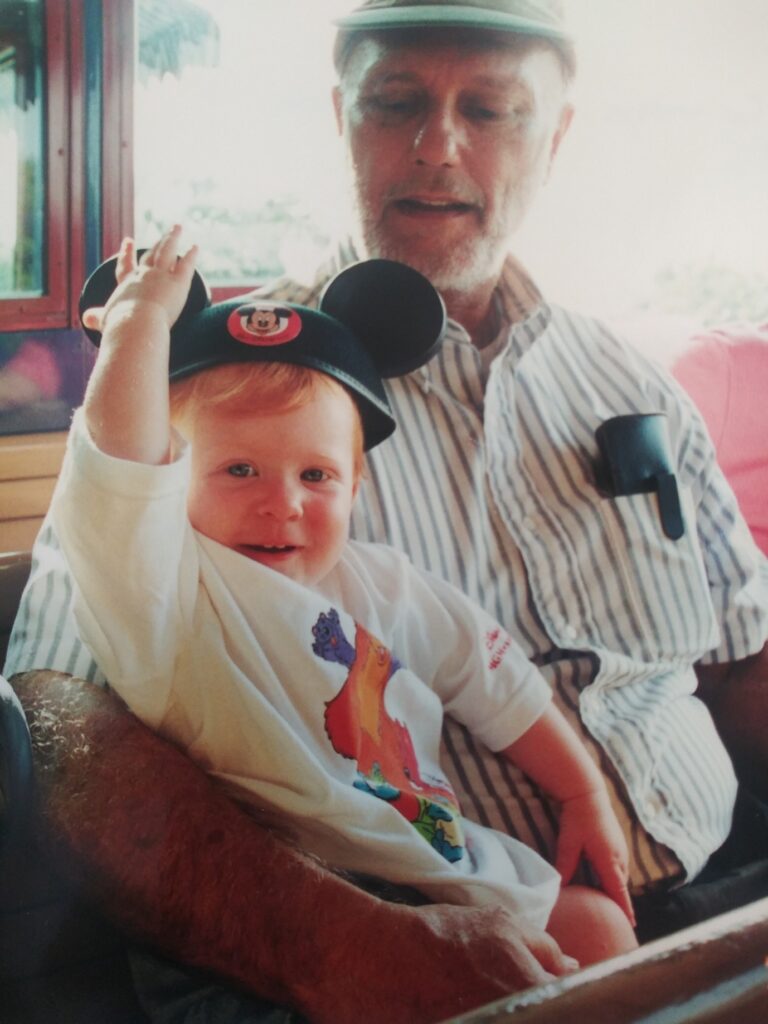
This series was inspired by the passing of my grandpa. It is dedicated to him as well.
